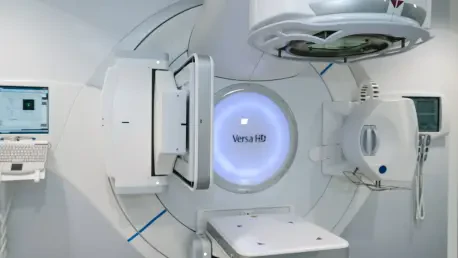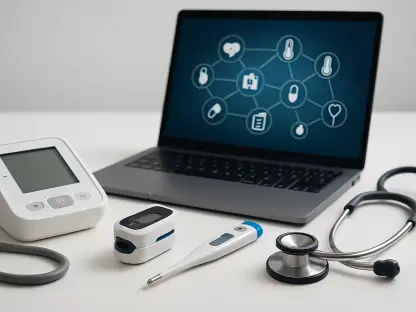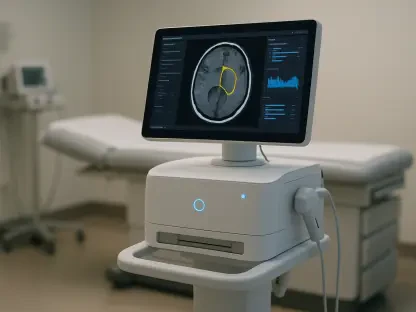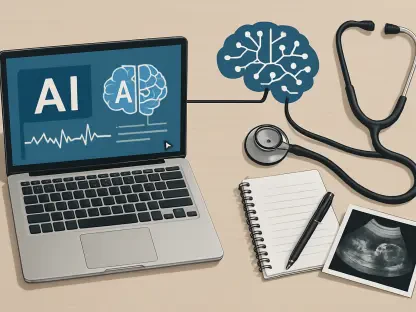With the ever-forward drive of medical technology, computed tomography (CT) scans have emerged as indispensable diagnostic tools, allowing physicians to detect potentially life-threatening conditions with clarity that was once unimaginable. However, the very mechanism enabling CT scans—the emission of radiation—has sparked scientific inquiries concerning its long-term effects on human health. As CT scans become more common, recent research has intensified focus on their possible link to increased cancer risk. While CTs are vital for early detection, experts illuminate their dual nature: a potential catalyst for adverse health outcomes.
Diving Into the Data
Evaluating the Radiation Risk
A pivotal research study published in JAMA Internal Medicine has brought considerable attention to the topic, examining the potential relationship between CT scan radiation exposure and cancer risk. Led by five researchers from the University of California and supported by contributors from the University of Florida, Kaiser Permanente, and London’s Institute of Cancer Research, this collaborative effort harnessed vast datasets. Utilizing data from the University of California San Francisco International CT Dose Registry, researchers aimed to forecast cancer incidences stemming from radiation exposure during CT procedures. Estimated results from the registry are a sobering prediction: approximately 103,000 cancer cases attributable to radiation could emerge from 93 million scans conducted this year alone. This projection raises fundamental questions about the diagnostic balance, weighing the undeniable benefits of CT against the incremental risk they represent.
Assessing Vulnerable Populations
While CT scans are generally considered safe for the population at large, the study highlighted specific vulnerabilities. The research points to increased risks for children, adolescents, and individuals under one year of age, whose rapidly dividing cells are particularly susceptible to radiation damage. Moreover, certain anatomical regions—such as the abdomen, pelvis, and chest—appear more vulnerable, necessitating heightened scrutiny during scanning processes. These findings accentuate the need for tailored scanning protocols, especially for young patients, balancing diagnostic necessity against the potential harm. Additionally, factors like scan frequency and radiation dose require meticulous calibration to mitigate risks among sensitive groups, reinforcing the complexity of determining optimal healthcare strategies.
Revisiting the Balance
CT Scans in Context
Despite these concerns, CT scans hold their critical place among lifesaving diagnostic tools, enabling early detection and effective treatment strategies. The benefits of identifying conditions, such as tumors at a treatable stage, often outweigh potential radiation dangers. A nuanced perspective emerges when placing CT scans alongside other established health risks, including alcohol consumption and obesity, which also contribute to new cancer diagnoses each year. These scans thus serve a pivotal role in modern medicine, necessitating informed decisions by healthcare practitioners aware of both their merits and pitfalls.
A Path Forward
The findings underscore the imperative to refine current practices, urging medical communities to advance technological innovations that reduce radiation exposure. This call to action seeks to integrate emerging technologies that provide clear imaging at lower doses. Concurrently, ongoing research remains crucial, exploring alternatives and improvements in scanning techniques while considering demographic-specific risk factors. Aligning policy with scientific guidance, professional groups should strive for standardization in operating procedures to minimize radiation exposure without compromising diagnostic quality. In this dynamic landscape of medical advancement, the ultimate objective remains a harmonious marriage between technology and patient safety.
The Lasting Impact
With the relentless advancement of medical technology, computed tomography (CT) scans have become essential diagnostic tools, enabling doctors to identify potentially dangerous health conditions with a precision that was previously unimaginable. Yet, the very process that makes CT scans effective—the use of radiation—has ignited scientific debates about its long-term impact on human health. As CT scans gain prevalence, recent studies have sharpened focus on their possible connection to an elevated risk of cancer. While CT scans are crucial for early disease detection, medical professionals highlight their complex dual nature: they provide invaluable benefits but also carry the possibility of instigating negative health repercussions. This duality prompts ongoing discussions within the medical community about balancing the life-saving insights these scans offer with the precautionary measures needed to mitigate potential risks associated with their radiation exposure.









